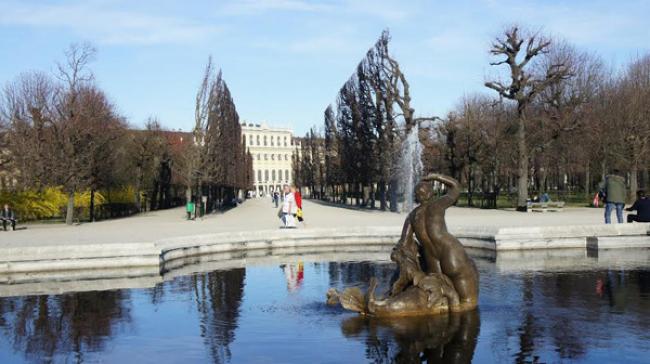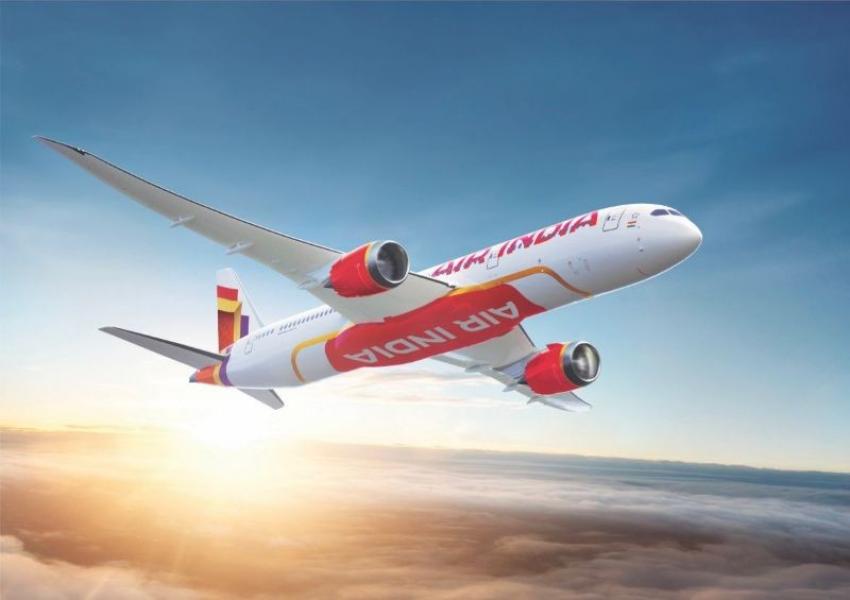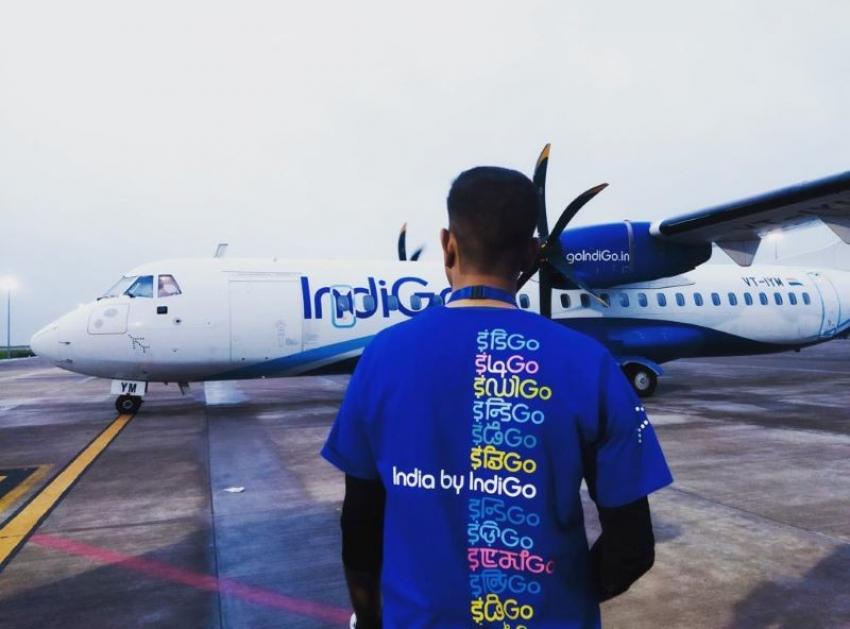11 Jan 2015, 05:00 pm

.jpg) “Vienna’s a sophisticated seductress. It has the architectural beauty of Paris without the attitude, the arts culture of London without the traffic jams, the dining scene of New York without the noise and everywhere the sound of music. I’m a seasoned, somewhat spoiled traveler yet it lures me back year after year.”- Travel writer Margaret Swaine
“Vienna’s a sophisticated seductress. It has the architectural beauty of Paris without the attitude, the arts culture of London without the traffic jams, the dining scene of New York without the noise and everywhere the sound of music. I’m a seasoned, somewhat spoiled traveler yet it lures me back year after year.”- Travel writer Margaret Swaine
In Vienna cultural delicacies and surprises are sprawling all over the city through music, architecture, food, art, and what not. From Ringstrasse (the Ring Road), Vienna’s architectural delight which is a 67 meter wide road that circles city’s first district, as you enter Hofburg palace, a dreamland is unveiled. Vienna of Mozart, Beethoven and Freud unfolds in layers.
Vienna's Ringstrasse is long enough to provide space for numerous monumental buildings, which were built during the period of Historicism in the 1860s to 1890s. Today, the buildings that stand there – from the Vienna State Opera to the Museum of Fine Arts – are among the most important sights.
Ringstrasse, interestingly, celebrates the 150th anniversary in 2015. Ringstrasse, boulevard, parks and the old Vienna town form part of the UNESCO World Cultural Heritage list.
The Ring’s monumental buildings include the Vienna State Opera, Burgtheater, City Hall, Parliament, Kunsthistorisches Museum and Natural History Museum. The road provides the backdrop for large-scale events throughout the year that play out in the buildings lining the boulevard and its squares and parks. Cultural highlights include the world-famous New Year’s Concert by the Vienna Philharmonic Orchestra at the Musikverein and the official opening of the Vienna Festival in spring on the square in front of the City Hall.
The square also sets the stage for Vienna Ice World from January to March when it is transformed into an ice skater’s paradise.
While walking through Ringstrasse to Hofburg Palace (the imperial palace) at regular interval the statues of Beethoven or Mozart remind you the connection of music with Vienna; the dream walk is punctuated by the concert ticket seller for the show of the evening.
Until 1918, the Hofburg was the centre of the gigantic Habsburg empire. Originally planned as a lavish “Imperial forum”, the grounds were built up majestically by the Habsburg emperors – from the 13th century "Alte Burg" to the most recent addition from around 1900. Here you will find more than two dozens collections of international standing. You will also discover cafés, restaurants, squares and parks to while away the time.
Portraying Vienna is not complete without few names and Sissi is one among them. At every pebble of the road, every brick of the wall says different stories of Sissi, the empress of Austria.
So at some point a visit to Schönbrunn Palace, which was Sissi’s summer residence, is must too..jpg)
This baroque complex contains an enchanting park, the Palm House, the Gloriette and a zoo. Spend an entire day at Schönbrunn: visit the show rooms with a "Grand Tour with Audio Guide," admire the splendid Bergl Rooms, and stroll through the “Labyrinth.”
Now coming back to the famous Hofburg palace, one must say it is in itself like a open book of European and Austrian history, including the Habsburg dynasty, rulers of the Austro-Hungarian Empire. It currently serves as the official residence of the President of Austria. And a bit of Second World War history and its prelude is thrown in for good measure. In 1938, Adolf Hitler proclaimed from the balcony of the New Castle onto Heroes’ Square the “Anschluss” (incorporation) of Austria into the Third Reich.
Hofburg complex is like cover page of Vienna. It is a cultural collage with the Imperial Chapel (concerts every Saturday mornings ), two major museums - The Museum of Natural History (Naturhistorisches Museum) and Kunsthistorisches Museum (The Kunsthistorisches Museum is the Museum of Art History, also often referred to as the Museum of Fine Arts) that houses a treasure trove of Habsburgs' formidable art collection; the impressive Imperial Library , the Imperial Treasury, the Burgtheatre, the Spanish Riding School, the Hofburg Congress Center.
Starting with museum one gets the essence of cultural heritage. The Imperial Palace’s silverware says it all, of the height of aesthetics. If you want to know what is fine dining, answer is Imperial Treasure’s collection. The exhibited Habsburg dining service and silverware, the centerpieces and glassware shine as much today as they did in the old days at the Imperial Palace.
Stepping out of the place is the entrance to the modern shopping arena of Vienna. A new world will open in every street layer by layer as you walk past the stores upon stores showcasing the best in modern lifestyle with almost every major brand jostling for attention. Every corner comes with an experience whether with horse driven carriages or brands like Swarovski, Gucci , Armani. St. Stephen's Cathedral- the mother church of the Roman Catholic Archdiocese of Vienna- is standing as a surprise at the end of one street in stark contrast with a modern shopping mall just opposite. This area is Stephansplatz and it is the main shopping district of Vienna.
 Spritz, the sparkling wine of Austria with a tingling sensation, can be a break while you can also grab some good coffee and strudel or even go for some fine dining in the middle of the street. Austrian chefs are ready at your service competing with McDonald's. Sipping wine with the eyes rolling on Rolex, Omega or Chanel is a sinful consumerist indulgence at Stephansplatz.
Spritz, the sparkling wine of Austria with a tingling sensation, can be a break while you can also grab some good coffee and strudel or even go for some fine dining in the middle of the street. Austrian chefs are ready at your service competing with McDonald's. Sipping wine with the eyes rolling on Rolex, Omega or Chanel is a sinful consumerist indulgence at Stephansplatz.
In slow step you can just halt in this shopping district and explore the world famous porcelain collection of Albin Denk if you want to bring back home a piece of Vienna that is represented by its imperial palaces, its collection and splendor.
Money and shopping is not the ultimate; another surprise waiting at another end here is Memorial against War and Fascism, a group of four powerful statues in pristine white behind Vienna's Opera House (on Albertinaplatz) that is a strong statement against all wars, including the atrocities of Nazi Germany when they were ruling Austria from 1938 to 1945.
Guidebook author and travel TV host Rick Steves puts it nicely in one of his writings found on the Internet.
He writes: “Standing directly in front of it, you're at the gates of a concentration camp. Step into a montage of wartime images: clubs and WWI gas masks, a dying woman birthing a future soldier, and chained slave laborers sitting on a pedestal of granite cut from the infamous quarry at Mauthausen Concentration Camp. The hunched-over figure on the ground behind is a Jew forced to wash anti-Nazi graffiti off a street with a toothbrush. The statue with its head buried in the stone (Orpheus entering the underworld) reminds Austrians of the consequences of not keeping their government on track. Behind that, the 1945 declaration of Austria's second republic — with human rights built into it — is cut into the stone. The experience gains emotional impact when you realize this monument stands on the spot where several hundred people were buried alive when the cellar they were hiding in was demolished in a WWII bombing attack.”
The statue of a kneeling Jew or an unborn child is enough to make you speechless and boo fascism.
Gustav Klimt, the Austrian symbolist painter, who created works like ‘The Kiss (1907-08)’ can’t be avoided in Vienna. The original painting is kept at Österreichische Galerie Belvedere gallery in the city, but everywhere it is present whether in print form or in the form of a statue. It is one of the affordable souvenirs for any budget traveller.
Evening can be a memorable one at the end of the same street at the famous Café Central, a traditional Viennese café where you can also enjoy a live piano performance every evening for nothing. Famous poet Peter Altenberg's life size statue is at the counter of Café Central. Every evening from 5 pm to 10 pm piano is played here. A rum coffee and Apple strudel with piano can be a nice end of a day in Vienna.
FACTSHEET
How to Get There
The Vienna-Delhi route offers an Austrian Airlines flight (operated by Austrian Airlines, through code share agreements and is also sold by Air India). The Austrian Airlines flight operates between Vienna and Delhi seven times a week. Other metros -- Mumbai, Kolkata, Chennai, Hyderabad and Bangalore -- can reach Vienna by convenient one stop flights through Turkish Airlines, Emirates, Air India, Lufthansa and British Airways.
Where to Stay:
While there are countless hotels and hostels which can be booked from Booking.com or similar sites, one good suggestion for modern trendy tourists to stay is at a relatively new hotel called Daniel. With rooms staring at 95 Euro, Daniel (with tagline Urban Stay) boasts of contemporary hospitality and stylish minimalism – aka Smart Luxury.
- From Kennedy’s Proposal to 1850s Saloons: The Three Historic D.C. Restaurants Everyone Must Try
- This city has the best bagel in the US, and it’s not New York!
- I escaped to Pachmarhi — what I found in the queen of Satpura left me spellbound
- Air Canada just ranked the Best New Restaurants of 2025 - And the Top Spot isn't who you think
- Rediscovering Arunachal's Monpa Cuisine: One Woman’s Millet Momo Revolution
- Discovering Heritage: A visual journey through Odisha crafts museum Kalabhoomi
- From kebabs to biriyani: Lucknow gets UNESCO honour for its royal cuisine
- Delta takes Spanish flavours to the skies
- Kolkata’s iconic Kathi Roll among world’s top 10 wraps: TasteAtlas
- Yellow Taxis and the Colours of Puja
Air Canada has introduced a new non-stop route connecting Toronto with Rio de Janeiro, with the first flight landing in the Brazilian city on Friday morning.
Air India, India’s leading global airline, and Maldivian, the national airline of the Maldives, have entered a bilateral interline partnership aimed at boosting connectivity between the two countries.
IndiGo, India’s largest airline, is grappling with one of its most severe operational crises in recent years, with widespread flight delays and cancellations disrupting travel across the country for a second consecutive day.





